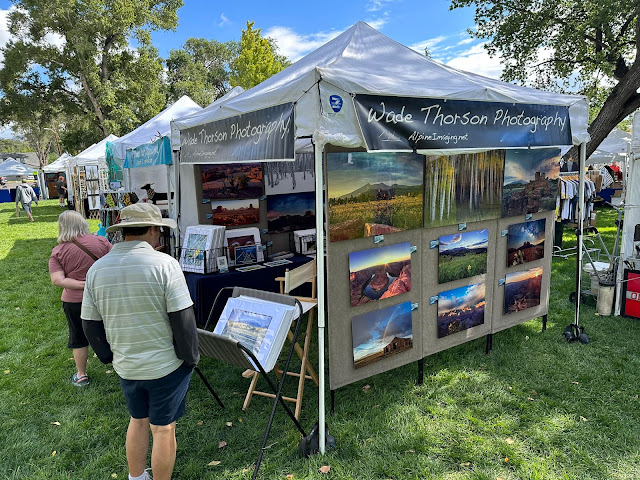Notom Window
Sometimes a new feature comes along that really makes your work easier.
This is the case with the latest update to Lightroom. Adobe just
released a new version of Lightroom 6 or Lightroom CC 2015, depending on
your subscription model. Along with adding the ability to access your
graphics processor to speed the Develop module, the other features are
what got me excited. They added a new HDR and Panoramic features, among
others. I just had to try them out with images from my last trip to
Escalante. The first image below was made by light painting the
foreground rocks with a large Mag Lite. I like the incandescent warm
color that this flashlight emits. I used my Nikon D800e on a high iso to capture the
static stars at 20mm f2.8 iso1000 for 30 seconds. I also used a cooler colored
headlamp behind the arch to illuminate the underside, to better
accentuate the hole. Another image was made for the startrails. In
this case my settings were 20mm f2.8 iso100 for 30 minutes. I had
my camera set on dark frame subtraction or long exposure noise
reduction. This is where the camera takes a photo of equal length to
read the noise level from the sensor, then in camera subtracts this
level from the previous image. This allows me to take a long exposure
with relatively low noise. Now I could have spent some time blending the
two exposures in Photoshop, something I had become adept at. But this
time I thought I'd try the new HDR function in Lightroom 6. Typically
this function would be for high dynamic range scenes, bracketed in
camera for the different exposures; darks, midtones, and highlights.
This time I got a wild hair, and thought why wouldn't it work for
nightscapes.


Well it turns out it did work, and pretty well. The cool thing Adobe did with this feature was use the camera RAW data, and export it as another RAW format DNG, or digital negative. The algorithm used ALL the data from the two exposures. It recovered details in all but the darkest shadows, and seamlessly blended the startrails right over the static stars. How it knew to do that without complex masking, I may never know. What I do know is that I can take this new DNG file and more fully bring my vision to reality using the rest of the filters and brushes offered in Lightroom. When you preconceive an image you would like to make, it takes time and thought to bring it to fruition. It has often been said that making of an image is a two part process. The first being the creative process. This is the process where a photographer must understand his tools enough to realize what could be done to make a successful image. At that point the photographer can free himself to experiment, and to loose ones self in the moment. It can also be that point when you can have a vision. A vision of how this image could look by the end of the second part of the process. The second part of this process is the developing process. This is done in software and it is used to finalize that vision into a polished piece of art. This new version of Lightroom is making steps to really aid photographers by saving them time and letting them focus on the vision and not on the software or time consuming processes. Nice.




Comments
Post a Comment